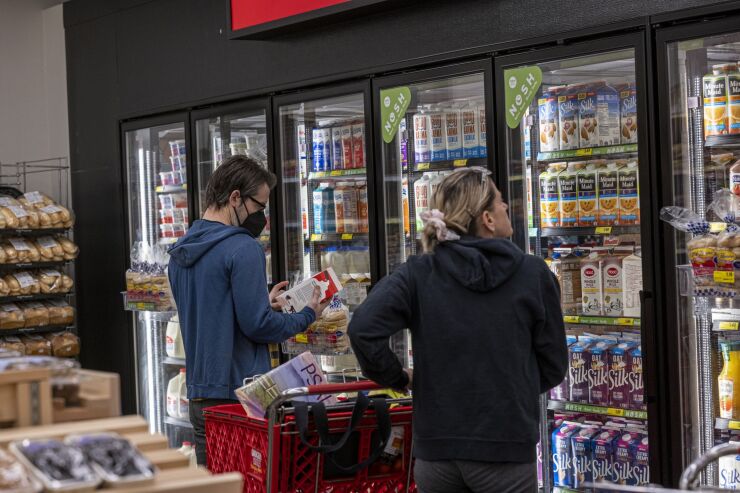Several key government-reported headline statistics present a distorted view of reality for most Americans, with the impact extending far beyond Wall Street. And it can have dire consequences — particularly when those numbers drive economic policy. Look no further than the Federal Reserve's recent decision to hike interest rates.
The Fed is putting its foot firmly on the brakes. It's raising interest rates at a pace we haven't seen in almost 30 years. In July, it hiked rates another 75 basis points. Some have argued that this radical response is the result of the Fed having been slow to respond to inflation.

But here's the rub: The Consumer Price Index is not a good gauge of inflation, most notably as it affects middle- and lower-income Americans. Using the CPI alone as an inflation gauge, it is understandable that the Fed would have been cautious about acting. As a point of fact, the Fed officially uses the Personal Consumption Expenditure Price Index (PCE), although in past months it appears that it has made rate increases based on CPI data alone. In June, before the PCE was even reported, the Fed responded to the imminent CPI increase by abandoning one of its strongest monetary policy tools, forward guidance, and raised rates 75 basis points instead of the planned 50 points.
In the prior decade, the main issue with inflation from the Fed's perspective was that it was too low. Then-Fed Chair Janet Yellen testified before Congress in January 2017 that "we're watching [underinflation] very closely and stand ready to adjust our policy if it appears the inflation undershoot will be persistent."
Accordingly, when the Fed in 2021 first saw signs of inflation using its usual metrics, price increases might not have been a worry, rather these increases may have been seen as welcome, offsetting the deflation seen during the initial COVID-19 outbreak. But the signals coming from the PCE and CPI in fact understated the reality faced by most Americans.
A more meaningful way to examine inflation is to understand its actual impact on most Americans. And in this regard, measuring the prices of the goods and services that middle- and low-income Americans need to buy to stay alive is an extremely relevant, if not the most relevant, piece of inflationary information. Measuring the necessity basket of goods and services, chiefly — housing, food, health care, transportation, needed technology — what we have called the "true living cost" or "TLC," one finds that during the past 20 years, costs have risen 40% faster than the CPI. The rising costs of these core necessities have impacted the American economy beyond what policymakers, including those at the Fed, have been led to believe.
In 2020, the national average rent per square foot was up more than 44% since 2011. This was during an expansion period following the Great Recession and before the COVID dip. The average medical expenses paid by families was up 56% since 2011. Yet the Bureau of Labor Statistics (BLS) reported CPI was up only 18% during this nine-year period. The Fed's "official" inflation metric, the PCE, went up only 13.3%. For low-income families, the basket of core necessities in the TLC is what they spend money on, but the CPI doesn't weight them as such in the overall inflation metric.
And indeed, this impact is exacerbated by other goods and services middle- and low-income Americans need for a decent standard of living and some hope for the American dream. Education, afterschool sports programs, going out to eat occasionally and a three-day vacation have all been rising faster than the CPI.
The profound disconnect between the CPI headline number and "facts on the ground" for middle- and low-income Americans — and this disconnect's influence on policy decision-making — can be seen clearly in the leadup to the Great Recession.
One reason most policymakers did not foresee the speculative housing bubble emerging in the early 2000s was no doubt because many were monitoring commonly used inflation metrics. The CPI for housing had only gone up 19% from 2001-2007, a relatively modest 2.9% average annual increase. Alternatively,
In this period prior to 2007, overall TLC outpaced CPI by 60%. Had policymakers been monitoring the TLC, the rapid price increase of necessities wouldn't have been a surprise and might well have triggered earlier alarm bells that markets were less stable than appreciated.
To be sure, the Fed is not alone in being misled by today's inflation metrics. All U.S. policymakers have to some degree used CPI or PCE as the inflation benchmark for decades. It's time to make a change. This isn't to say these current measures aren't helpful and worth promulgating as a supporting metric. But the real headline number should be more relevant to the bulk of Americans. We venture to say that had the Fed and other policy leaders used the TLC as a benchmark for inflation, its reaction to the twists and turns of the economy would have been very different — and the response to the current jump in inflation would have been sooner.






